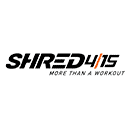Cross-Training Your Brain: Athletic Drills That Improve Gaming Performance
Ever wondered if your workout routine could actually make you a better gamer? It might sound like a stretch, but science and a growing number of pro gamers say otherwise. The connection between physical training and digital performance is real. Whether you’re sniping enemies in an FPS or strategizing in an intense MOBA, your body and brain need to be in sync. Quick reflexes, sharp focus, and the ability to stay cool under pressure aren’t just born they’re built, and athletic drills can help.
Reaction time, hand-eye coordination, and mental endurance are all critical to outplaying your competition. These aren’t your average workouts; they’re targeted drills that challenge your mind as much as your muscles. So if you’re ready to grind smarter, not just harder, let’s explore how a few sprints, squats, and shuttle runs might just be your secret weapon for the next match.
The Science Behind Physical-Digital Performance
The connection between athletic activity and gaming prowess isn’t coincidental. When you engage in physical exercise, your brain releases a cocktail of neurotransmitters that enhance cognitive function. These chemicals improve focus, reaction time, and decision-making capabilities, all critical skills for competitive gaming.
Research from the University of Illinois found that regular aerobic exercise increases the volume of brain regions responsible for memory and thinking. This neuroplasticity directly translates to gaming scenarios where split-second decisions determine victory or defeat.
Reaction-Enhancing Drills
Speed Ladder Training
The humble speed ladder, a staple in athletic training, offers tremendous benefits for gamers. The quick footwork required mimics the rapid decision-making process in gaming:
- Set up a speed ladder on any flat surface
- Practice basic in-and-out patterns for 30 seconds
- Rest for 15 seconds
- Complete 5 sets
This exercise improves neural pathways responsible for reaction time. Many professional esports teams have incorporated ladder drills into their training regimens, recognizing the transfer of skills to gaming performance.
Ball Reaction Drills
Tennis ball reaction drills sharpen visual processing and hand-eye coordination:
- Stand facing a wall, holding a tennis ball
- Throw the ball against the wall
- Catch with alternating hands
- Increase difficulty by standing closer or using smaller balls
These exercises directly translate to improved target acquisition in first-person shooters and faster reactions in fighting games. The neural adaptations happen surprisingly quickly, with many gamers noticing improvements within weeks.
Endurance for Extended Gaming Sessions
Marathon gaming sessions demand physical endurance that many players underestimate. The focus fatigue experienced during lengthy tournaments often stems from physical limitations rather than mental ones.
Incorporating moderate cardiovascular exercise even just 20 minutes of jogging three times weekly significantly improves oxygen flow to the brain. This enhanced circulation allows for sustained concentration during critical late-game scenarios when many competitors begin to falter.
Professional gamers, particularly those who compete in casino games like poker tournaments or who play Online gambling in NJ, understand that physical stamina directly correlates with mental endurance during high-stakes play.
Balance and Proprioception Training
Balance exercises develop proprioception—your body’s awareness of its position in space. This heightened spatial awareness correlates directly with improved in-game navigation and positioning.
Simple balance exercises include:
- Single-leg stands (30 seconds per leg)
- Yoga poses focusing on equilibrium
- Balance board training (starting at 5 minutes daily)
Elite gamers often use these techniques before tournaments to activate the vestibular system, which controls spatial orientation and balance. This activation primes the brain for the complex spatial calculations required in three-dimensional game environments.
Hand Dexterity Exercises
Gaming demands exceptional finger dexterity and hand coordination. Physical therapists recommend these exercises to enhance fine motor control:
- Finger taps on tables (30 seconds per hand)
- Rubber band resistance training between fingers
- Grip strengtheners (3 sets of 10 repetitions)
These exercises improve the neural connections between your brain and hands, reducing input lag between thought and action critical in competitive gaming where milliseconds matter.
Cognitive-Physical Integration
The most effective training programs integrate cognitive challenges with physical movement. For example:
- Set up five numbered cones in random positions
- Have a partner call out numbers
- Sprint to the corresponding cone as quickly as possible
- Return to start position between each call
This exercise combines cardiovascular training with decision-making pressure similar to gaming scenarios. The physical exertion under cognitive load builds mental resilience that translates directly to high-pressure gaming situations.
For those looking to track their progress, various fitness apps offer specialized programs for gamers focusing on these cognitive-physical connections.
Recovery and Sleep Optimization
Perhaps the most underrated aspect of physical training for gamers is recovery. Sleep quality directly impacts reaction time, decision-making, and emotional regulation during gameplay.
Studies show that athletes who maintain consistent sleep schedules demonstrate 9% faster reaction times than those with irregular patterns. For competitive gamers, this difference can be decisive.
Simple recovery practices include:
- Establishing a consistent sleep schedule
- Implementing a 30-minute digital detox before bedtime
- Using contrast therapy (alternating hot and cold showers) to improve circulation
These recovery techniques allow the brain to consolidate the neural adaptations gained through physical training, creating lasting improvements in gaming performance.
Implementing Your Cross-Training Program
Start with a conservative approach of three 20-minute training sessions weekly, incorporating elements from each category discussed above. Track your gaming metrics before and after implementing your program to identify which exercises yield the greatest benefits for your specific gaming style.
Remember that consistency trumps intensity. A moderate, sustainable routine will produce better results than sporadic high-intensity sessions that lead to burnout.
By embracing this physical-digital connection, you’ll develop competitive advantages that extend beyond traditional practice methods. The next evolution in gaming performance isn’t found in hardware upgrades or more practice hours, it’s in the untapped potential of athletic training for digital competition.
Read more mental and physical fitness articles.









Leave a Reply
Want to join the discussion?Feel free to contribute!